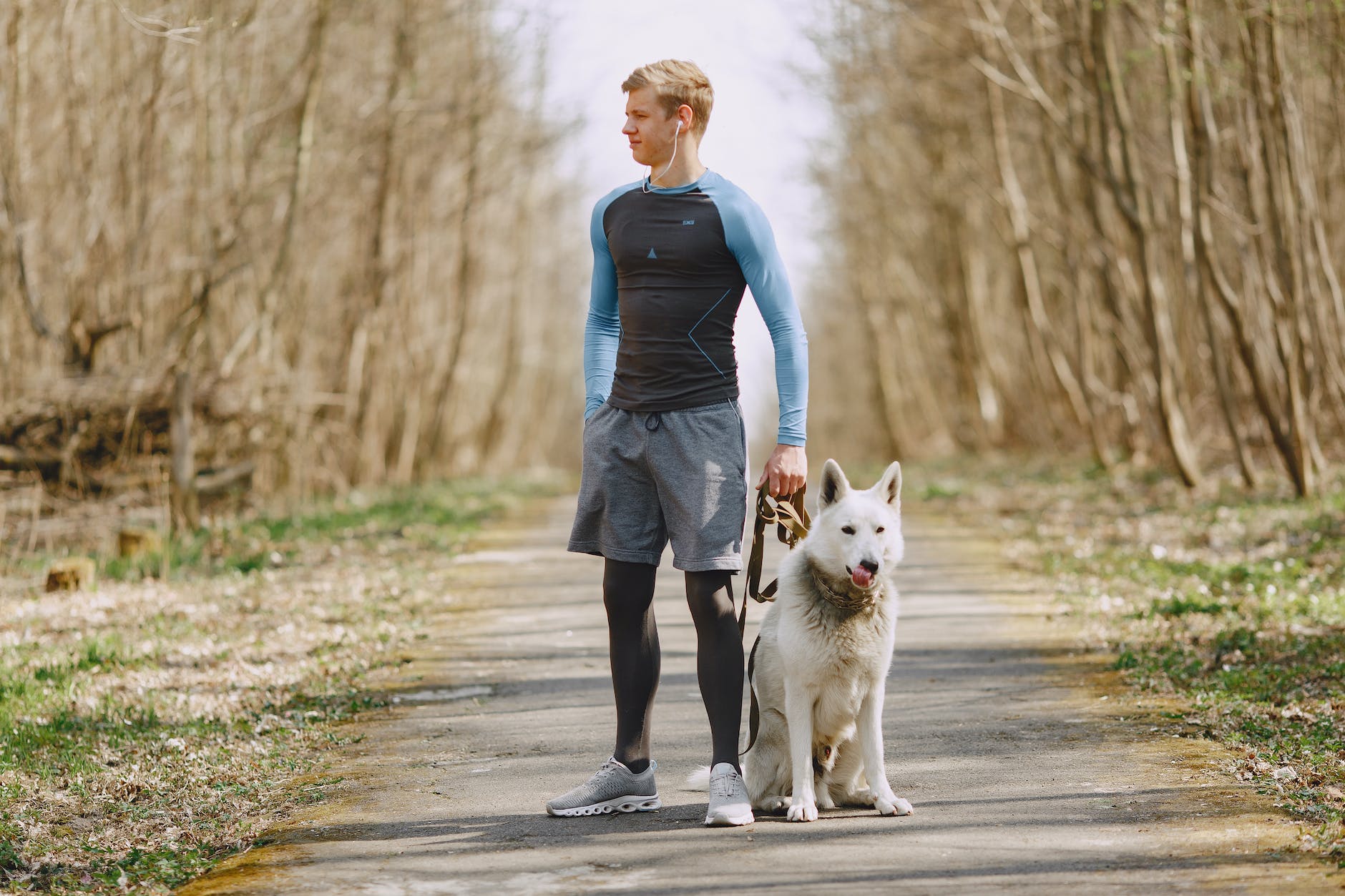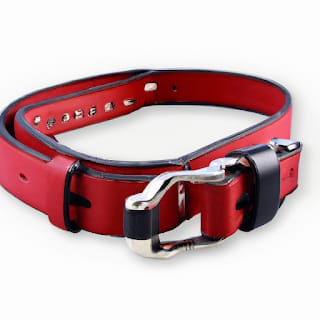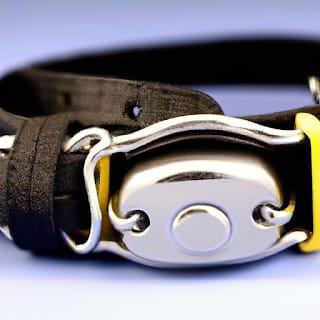
How To Use A Dog Training Collar
A dog training collar can help you train your pet safely. This article provides a basic yet efficient dog training collar guidance. You’ll learn How To Use A Dog Training Collar by knowing collar kinds and tactics. Whether you’re a beginner or an experienced trainer, this article will help you build a good relationship with your dog.
Finding the Right Dog Training Collar
Consider the collar’s function while purchasing a dog training collar. Will you teach your dog basic obedience, treat behavioral difficulties, or improve its training? Dog training collars have different functions; therefore, understanding them is important.
How To Use A Dog Training Collar: Consider the Collar’s Purpose
Determine your dog training collar objective before buying. Looking for a collar for leash training, barking control, or off-leash training? Knowing your goals is crucial since each collar type addresses distinct training goals.
Understanding Dog Training Collar Types
Choke collars, prong collars, e-collars, and citronella collars are dog training collars. Each collar has its own training techniques and characteristics. Learn about the different collars and select one that fits your training goals and your dog’s demands.
See a Pro Trainer
Consider consulting a skilled dog trainer while purchasing and utilizing a dog training collar. A trainer can evaluate your dog’s behavior, suggest a collar, and help you teach. Their competence will assure a good dog training experience.
The Right Size and Fit
You must choose the right size and fit for your dog after choosing the collar type that meets your training goals. A slack collar may slide off, while a tight collar may hurt. Consult the manufacturer’s instructions or a trainer to ensure your dog’s collar fits.
Preparing Your Dog for Collar Training
Prepare your dog for training before using a it. Ensure their comfort and safety, get them acclimated to wearing a collar, and form good connections with it.

Keep Your Dog Safe and Comfortable
Make sure your dog is secure and comfortable before using the training collar. Let your dog sniff and inspect the collar without wearing it. This will help children identify the collar with happy events and lessen anxiety.
Train Your Dog to Wear a Collar
Put the collar on your dog for brief durations each day to gradually introduce it. Start with short sessions and expand as your dog gets used to it. Make sure they’re comfortable and not upset.
Create Positive Collar Relationships
Associate the collar with fun activities like playing or getting goodies to make it rewarding for your dog. Treats and praise while your dog wears the collar reinforce the impression that it brings good things.
Exercise: Basic Obedience
Before using the training collar, teach your dog basic obedience. Use positive reinforcement to teach “sit,” “stay,” and “come”. This will provide the framework for collar training.
Introduce the Collar to Your Dog
Introduce the training collar to your dog slowly and with positive reinforcement. This will help your dog link the collar with happy events and ease collar training.
Introduce Collar Gradually
Introduce the collar without using its training features. Play or train with your dog while wearing the collar for short durations. Depending on your dog’s comfort, gradually increase the length over days or weeks.
Use positive reinforcement
Use positive reinforcement to link the collar to good behavior in your dog. Treat your dog with praise, treats, and play when they obey orders or improve.
Start with brief workouts
Start collar training your dog with short, concentrated sessions. Short training sessions keep your dog interested and motivated. Gradually lengthen sessions as your dog becomes used to the collar’s training modes.
Watch your dog’s behavior
Watch your dog for stress, discomfort, or bewilderment when using the training collar. If your dog reacts negatively, alter the training or hire a trainer. Your dog’s comfort and well-being are paramount throughout training.
Effective Dog Training Collar Use
To maximize your dog training collar, you must know how to utilize it. Choosing the suitable training mode and level, issuing timely and consistent corrections, matching collar corrections with voice orders, and rewarding desired behavior are key.
Select Training Mode and Level
Training modes and stimulation levels vary by dog training collar. Choose a mode and level based on your dog’s response and training. Start low and build up if needed. Always put your dog’s comfort first when using the collar.
Make Regular Corrections
Timeliness and consistency are crucial with training collars. Give the correction promptly after the bad conduct. Consistent corrections can help your dog learn the link between behavior and consequences.
Verbal Commands and Collar Corrections
Always use verbal instruction with the collar correction to encourage the desired behavior. To stop your dog from barking, use collar correction and “quiet.” This will help your dog associate their behaviors with the command and collar reprimand.

Applaud Good Behavior
Always praise and reward your dog for good conduct. Positive reinforcement will encourage your dog to follow commands, avoid bad behavior, and show improvement.
Common Mistakes to Avoid
Avoid frequent blunders that might slow down and damage your dog while training.
Misusing or Overusing the Collar
Misusing the training collar is a typical error. Use the collar to train, not punish. Successful training requires timing, correction levels, and positive reinforcement.
Starting with High Stimulation
Avoid starting with strong stimulation. Start mildly and escalate as needed. Harsh or excessive stimulation might stress and upset your dog, making the collar unpleasant.
Neglecting Timing
Timing is key with a training collar. Give the punishment soon after the unwanted action to help your dog comprehend cause-and-effect. Waiting too long or giving the punishment randomly may confuse your dog and reduce training efficacy.
Avoiding Positive Reinforcement
Focusing on punishments instead of positive reinforcement is a typical error. Effective training requires positive reward, which strengthens the dog-human relationship. Reward and praise desired behaviors during training.
Fixing Training Issues
Despite your best efforts, training may be difficult. Addressing fear or anxiety, inconsistent reactions, simple training procedures, and expert support are possible remedies.
Addressing Anxiety or Fear
Take a step back if your dog exhibits fear or anxiety about the training collar. Reintroduce the collar slowly with positive connections, and consult a trainer or animal behaviorist to resolve any underlying concerns.
Handling Inconsistent Responses
Inconsistent dog responses to the training collar may suggest the need to reinforce prior training procedures. Bring your dog back to the fundamentals and reinforce his obedience cues and habits. Consistent reactions need patience and consistency.
Relearning Training Basics
Relearning training principles helps overcome obstacles. Reviews of fundamental obedience commands, re-establishing a firm foundation, and reinforcing the dog-owner link can enhance collar training. Be patient and flexible.
Consider Professional Help
Consult a professional dog trainer if you’re having trouble collar-training. To ensure training success, an expert trainer may offer insights, specific techniques, and continuing assistance.
Maintaining Safety and Health
To keep your dog safe and comfortable throughout training, take measures and check their comfort.
Check collar for discomfort regularly
Please check the collar often to ensure it fits properly and is not irritating. Look for rubbing, chafing, or redness on your dog’s neck. Adjust the fit or see a trainer if problems arise.
Avoid Long-Term Collar Use
The collar is useful for training, but don’t leave it on your dog. When not training or supervising your dog, remove the collar. Your dog can relax without the collar.
Remove collar while playing or resting
Remove the collar during play or relaxation. This prevents collar entanglement and damage during these activities. Reattach the collar while training or supervising.
Check Dog Skin for Irritation
Collars might irritate sensitive dogs. Look for redness, irritation, or pain in your dog’s neck. If the collar causes irritation, stop using it and see a vet.
To improve your dog training experience and build your bond, consider these additional ideas for successful training with a dog training collar.
A Comprehensive Training Plan Should Include the Collar
A positive reinforcement, consistent, and patient training method should incorporate the training collar. The collar should assist your training, not replace it.
Training should be brief and engaging
Keep training sessions brief and fun to keep your dog engaged. Dogs have short attention spans, so short training sessions work well. Reward your dog at the end of each session.
Train Patiently and Consistently
How To Use A Dog Training Collar? Successful dog training and collar training require patience and perseverance. Positively praise consistent conduct and give your dog time to learn the training methods. Keep your approach consistent to help your dog learn faster and trust you.
Build Positive Relationships
Dog training collars should foster a good bond between you and your dog. Be patient, kind, and understanding during training. A good relationship will motivate your dog to learn.
Conclusion
How To Use A Dog Training Collar involves considerable thought and positive reinforcement. Understanding the collar’s purpose, preparing your dog for collar training, using it correctly, avoiding frequent mistakes, addressing training issues, and emphasizing safety and well-being will help you and your dog train successfully. Remember, a well-trained dog is a happy, confident companion, and a training collar may help you get there.”
